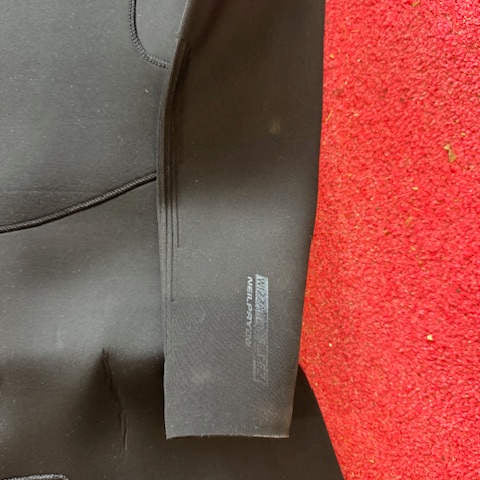Wetsuit Technologies- What you need to know!!
Chris ShawShare

Wetsuit Technologies- What you need to know.
Sometimes it is hard to know what you’re paying more for in a wetsuit. So, in this article we are outlining someone of the differences and extras that are in wetsuits that make some of them better than others. Or some wetsuits better for certain water sports. Often when you pay more for a wetsuit it will be warmer, more flexible and more durable. But keep an eye on these key areas to ensure it is the wetsuit you’re after and do well for what it for.
Seams.
Flatlock
This is your standard seam that come as standard in the entry level summer wetsuits. This stitching goes all the way through the neoprene. This creates tinny small holes on every seam for a small amount of water to ingress. This is generally okay for summer wetsuits as the water isn’t as cold and helps to keep the cost down.
If you’re in a shop, a flatlock seam can be identified easily as the stitching can be seen from both the inside as seen in the images below:

Glued and Blind stitched (GBS)
To stop the stitching creating a hole all the way through the neoprene and leaking water. A stitching technique called blind stitching can be used. Which doesn’t go all the way through, which goes half the way through the neoprene and is reinforced with neoprene glue which also creates a far better seal. This will make your wetsuit a lot warmer as less water will ingress and more durable.
Blind stitching and glue is nowadays standard on winter wetsuits and higher range summer wetsuits
When looking at a blind stitched and glued wetsuit you will see stitching on the outside and glue on the inside as seen below. GBS has the most descrete interior seam.

Taped
To increase the seal (therefore the warmth) and durability of wetsuits Mid to Top end wetsuits add a thin rubber tape to the inside of the seam. Sometimes this is on all seams, other times just in high stress areas.
This can be seen on the inside of the wetsuit, like the picture below.

Sealed Seams
These Seams are sealed with liquid rubber to ensure they’re water tight and bombproof. This can be done on both the inside and outside of the seams. This can be called many things such as welded, liquid sealed, or welded, but all follow this principle. These are found in the highest end wetsuits such as the O’Neill psycho freak, as pictured below. As you can see it has been taped on the inside (blue) and welded on the outside.

Thermal lining
To increase the warmth of wetsuits a lot of wetsuits have a thermal lining inside. These are often colourful interiors to the suits increase the surface area of the inside of the wetsuit. Which in turn increases the heat retained between the wetsuit and your body. Some Wetsuits might have this on the chest and back panel. Other high end wetsuits have this throughout. The thermal lining does make a huge difference in the warmth and comfort of a wetsuit as the lining is often soft too.


The Prolimit Preadtor suit above, has prolimits Zodiac thermal lining which is very warm and soft.
Single or double skin wetsuit?
Double skin neoprene is standard in most all round wetsuits nowadays, it is very warm when underwater and durable. Making it perfect for all round use when sailing, SUPing or Kayaking for example.
Single skin neoprene is more delicate, however does produce less drag through the water. This makes it preferable for swimmers as they will glide through the water with less effort. But swimmers do have to be more careful with their single skinned wetsuits, as they’re more likely to tear and rip. Hence it is not as commonly used in more traditional all-round wetsuits, as they need to be stronger and longer lasting.
Nevertheless, single skin neoprene is much better at reducing wind-chill, and will keep users warmer when it is windy. This makes it more desirable for wind sports such as windsurfing and kitesurfing. Therefore brands often add single skin panels on the chest and back to reduce wind chill on some double skin wetsuits. This is a great thing to look out for if you’re a high wind enthusiast such as windsurfer or kite surfer.
This 1st wetsuit is completely single skin (swim specific). Notice how shiny the exterior of the whole wetsuit is.

The 2nd is a double skin wetsuit with single chest panel. See how the skin of the neopene is different between the chest panel and the rest of the wetsuit.

Hopefully this blog has helped you think more about your next wetsuit and what goes into it. For example if youre windsurfing or kitesurfing a wetsuit with single skin chest and or back panels is recommended. And also what the different seams are and what goes into making them.
If you have any further questions about wetsuits and wetsuit technologies, please don’t hesitate to get in contact with our knowledgeable staff. Either via telephone, email or chat with us.
But for now, take a look at our wetsuit range here.











